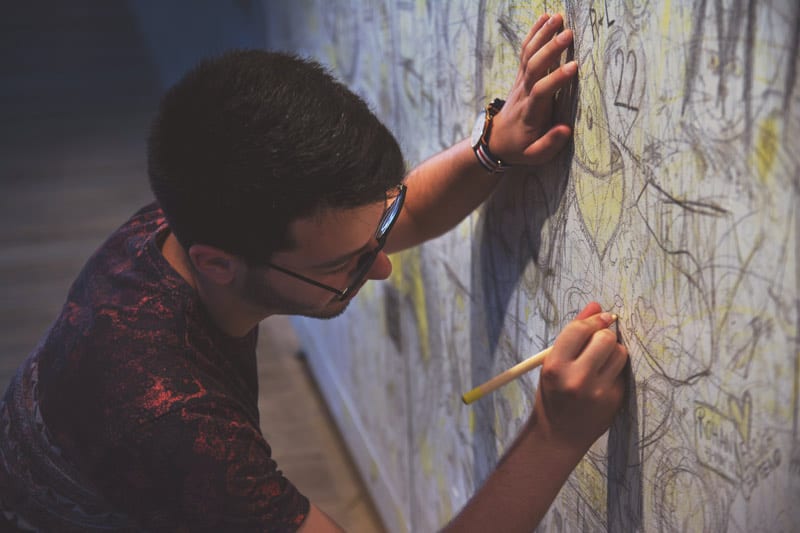My life with bipolar disorder II has included six periods of success and six periods of failure. The worst began in 1980 when I was 42 years old. I had purchased a small guest ranch in Wyoming with the woman I loved. The ranch, which faced the Continental Divide at 8,000 feet, was to be our last frontier.
Two years later, in good part due to the 1980-1983 recession, I lost the ranch, all of my money, my new lifestyle, and the woman I loved turned and walked on me. For the next several years, I stumbled in and out of clinical depression, laced with bouts of suicidal impulses, brief manic highs accompanied by an excess of alcohol, unacceptable social behavior, and mixed moods of anger, anxiety, self-doubt, and confusion. I had no idea at the time that stress had triggered my latent bipolar disorder.
Within a year, I hit my low point. I was drinking straight vodka from a bottle, swimming a Florida lake full of snakes and alligators, and trying to determine if there was any meaning to living. I sat in a chair thinking about the most effective way to take my life. When I was about to put my solution into action, I was hit with an extremely bizarre epiphany. In the black background of my mindscape, I suddenly saw—a small, white, ball of energy.
On closer inspection, the white ball was a blur of speeding particles. I decided it must have been a neutron star. My mind convinced me this symbol represented my creative energy because the tacit message that accompanied the image said: As long as you spend your time creating, you will live, and your life will have meaning.
Another decade passed before I learned I was bipolar II and was sent off to the VA (Veteran’s Administration) psych ward in Wyoming to be prepped for Lithium. The diagnosis enabled me to understand my fractured past and helped me realize that while I had struggled to resolve major problems, creativity saved my life every time. The first time it happened, I was avoiding my wife in a splintered marriage. I spent as much time as possible by myself, researching and writing the genealogy of my family surname. Later, as I coped with the angst of forcing myself to take a full-time job, I researched, wrote, and published a book on the creation of Yellowstone National Park.
The associated creative activities (1) enabled me to separate myself from my self-generated stress, (2) enhanced my self-image, (3) provided a source of personal satisfaction, and (4) unknowingly moved me closer to the bipolar’s goal of personal balance and stability.
Beginning in 1993, at age 55, I moved closer and closer to using creativity as my new path in life. I picked up tools I had used in high school and learned the art of pen and ink and watercolors. Eventually, I also researched, wrote, edited, and published eight books, including Peddlers and Post Traders: The Army Sutler on the Frontier, the only book in print on the profession and contributions of the American military post trader.
The lesson here is simple: look deep within yourself, and when you finally understand you possess a creative streak – regardless of how strong or weak it may be and what skills or activities it points you toward – you need to grasp it, nurture it, develop it, and flaunt it. At the very least, it may provide you with a “time out.” At the other end of the spectrum, it might very well save your life.
About the Author: David M. Delo, Colorado. “BiPolar since college—maybe mid-teens. No sense of self till age 58, when I was properly diagnosed. Counterintelligence agent in France in the mid-1960s, V.P. at Levi Strauss & Co in San Francisco, CA, late 1970s.”
Autobiography: Beyond the Tears and Laughter: Insights from a Manic Depressive (2002). Artist/writer/photographer full time since 2000.
Photo by Gianandrea Villa on Unsplash
The opinions and views expressed in any guest blog post do not necessarily reflect those of www.rtor.org or its sponsor, Laurel House, Inc. The author and www.rtor.org have no affiliations with any products or services mentioned in the article or linked to therein. Guest Authors may have affiliations to products mentioned or linked to in their author bios only.
Recommended for You
- Social Anxiety in Early Recovery: Navigating Social Situations Sober - December 29, 2025
- How to Stop Nail Biting: What Finally Worked for Me After Years of Failed Attempts - December 26, 2025
- Dealing With Toxic Family Members: A Survival Guide for Family Gatherings - December 22, 2025






Great article, David! As a writer and artist myself, I can very much relate to the transformative power of creativity and have seen it improve my life as well. Thanks for sharing your story! 🙂